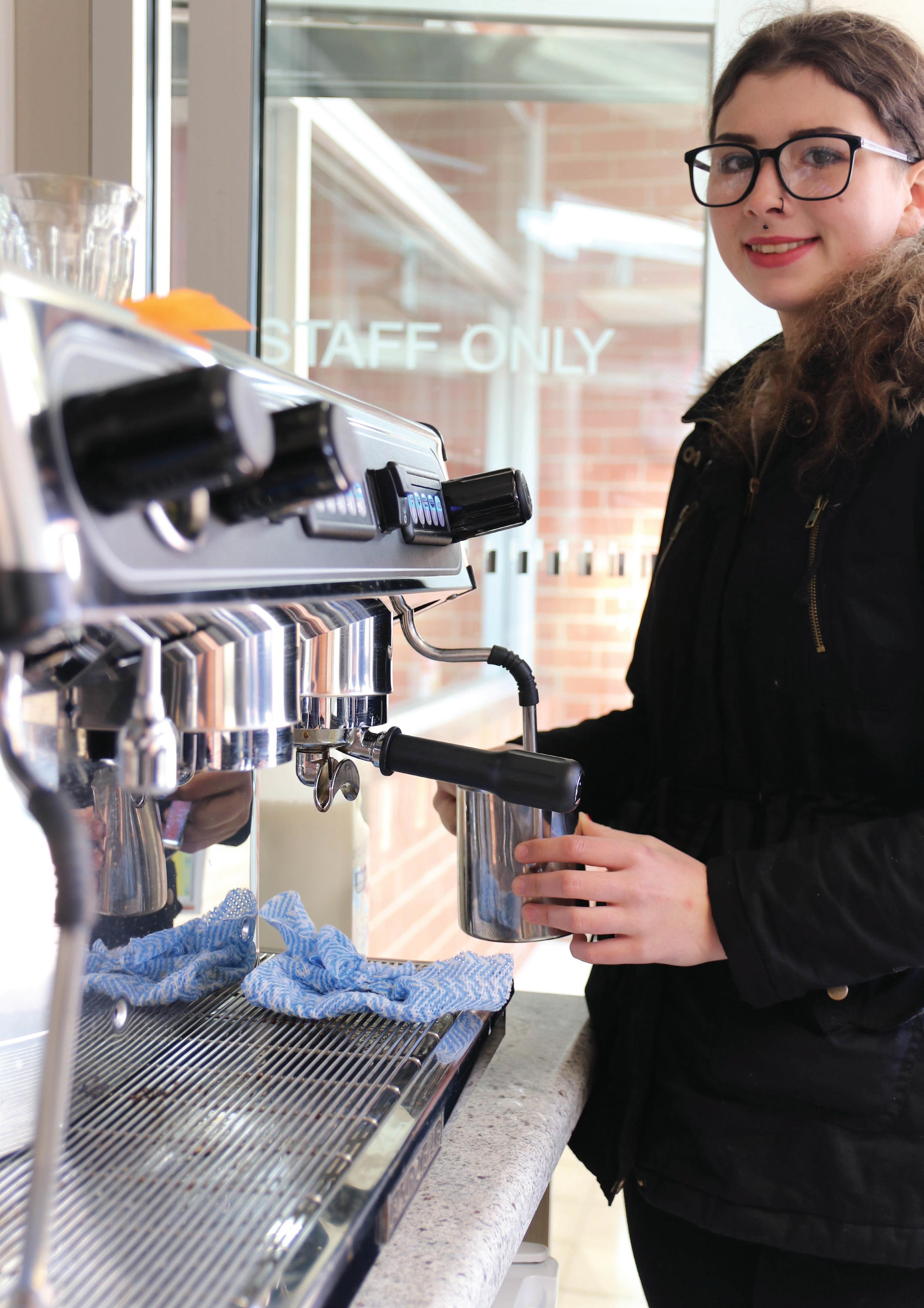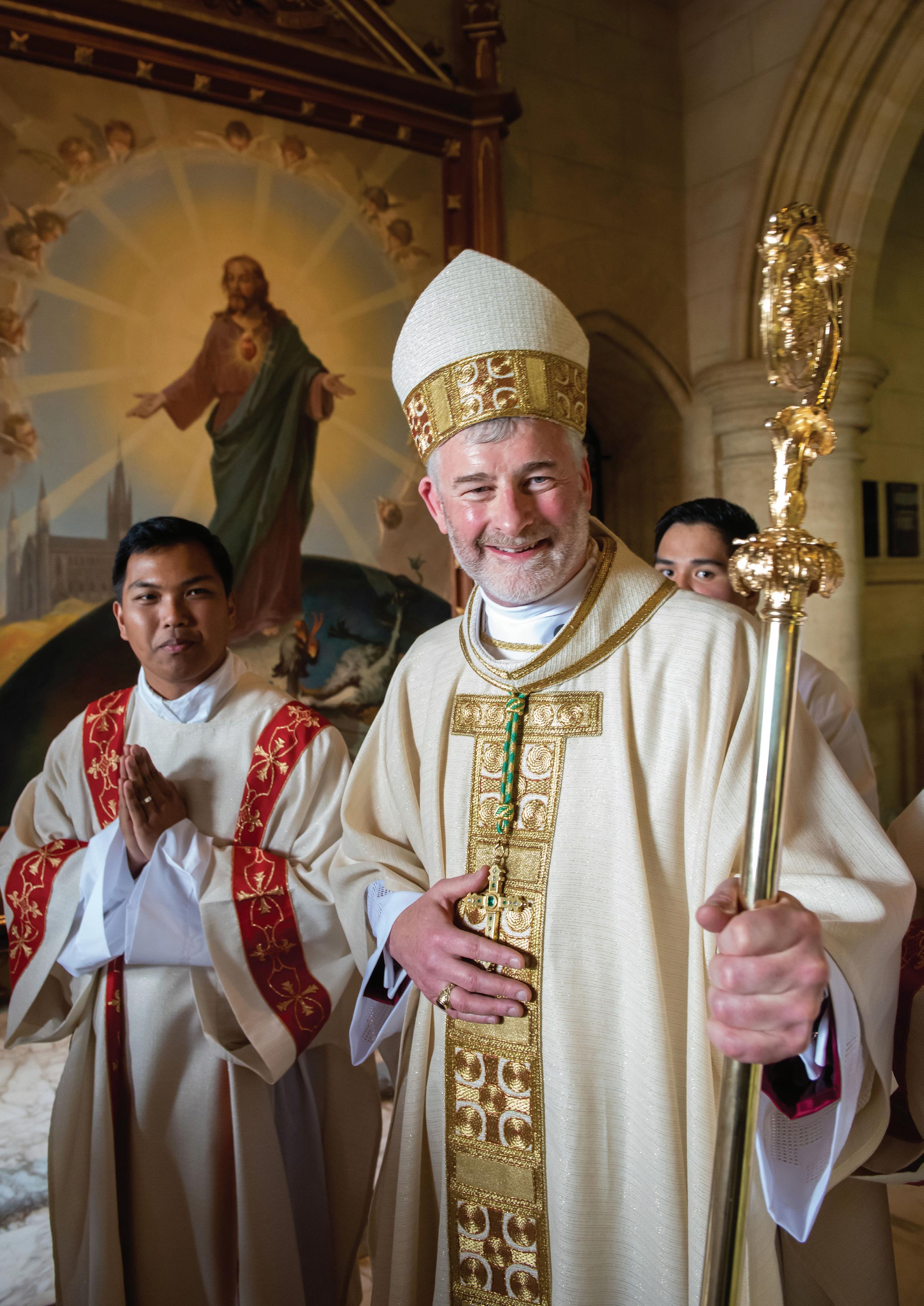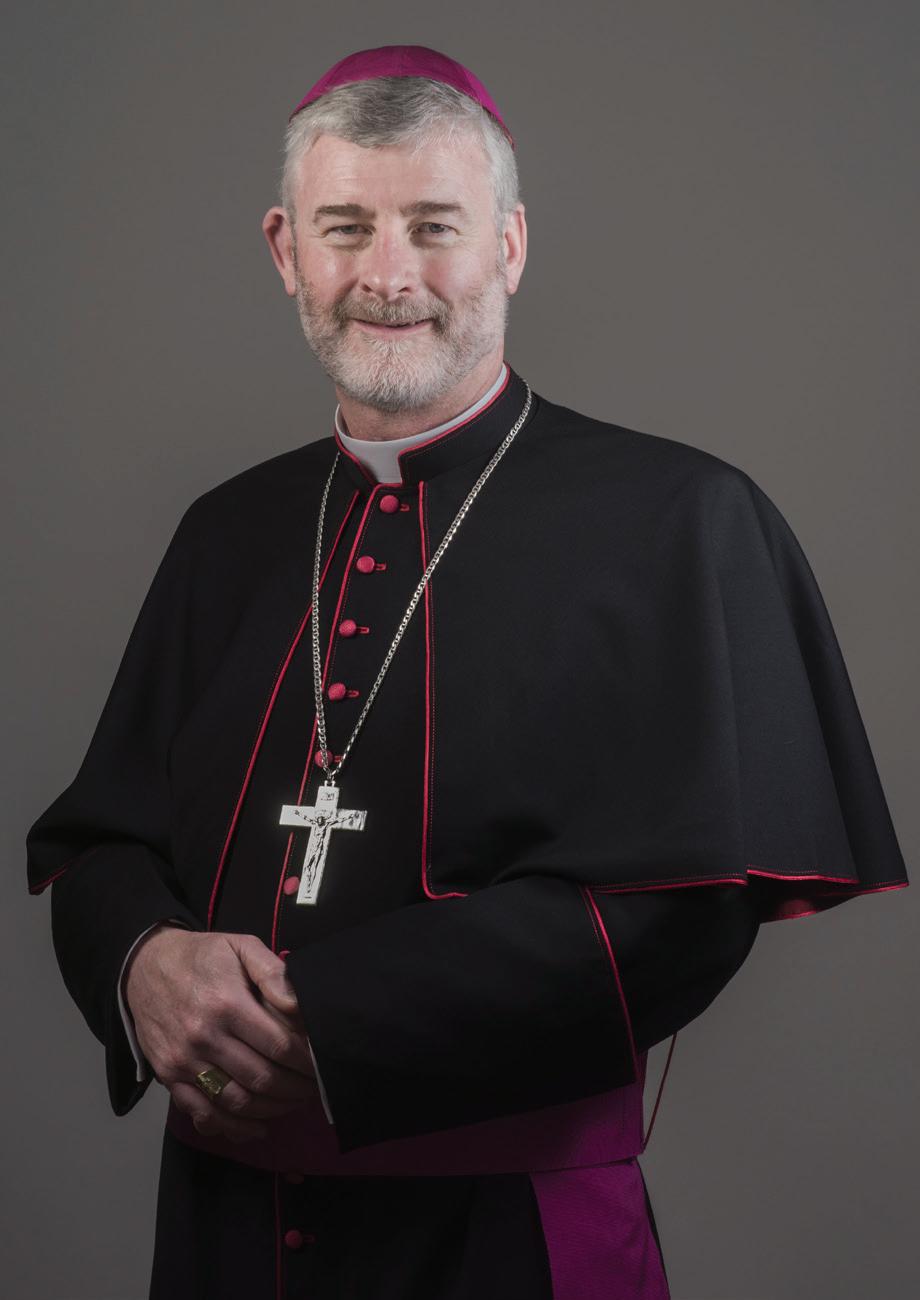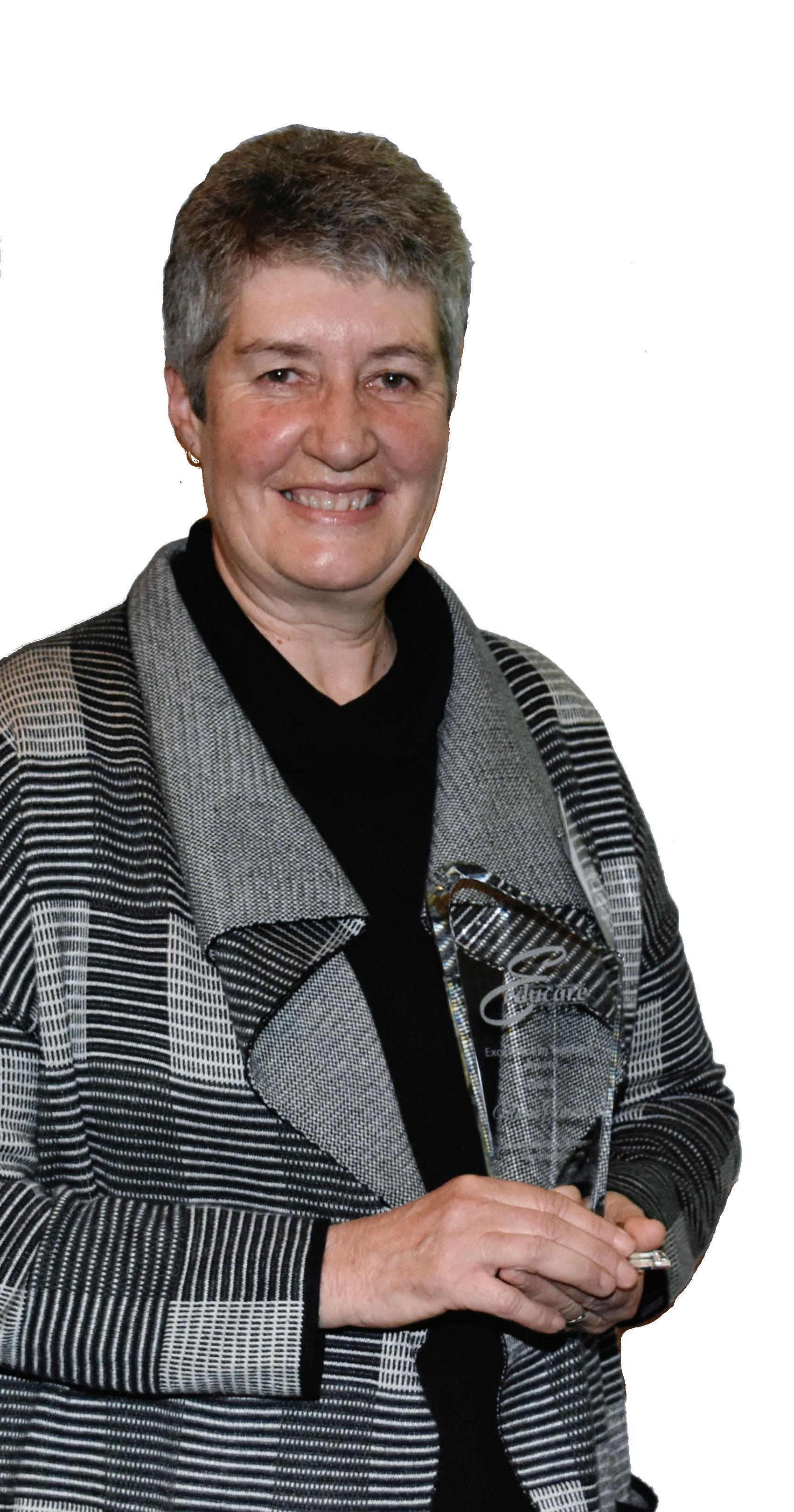
6 minute read
WHAT’S IN A NAME
When a new Catholic school or college is established, the important task of choosing a name begins! The name enables a school community to celebrate the virtues and character of its namesake, establishing the beliefs and values of the school. This year, the newest school in the Sandhurst Diocese opened its door as St Anne’s College Kialla. This is the first time that a Sandhurst school has been named after the mother of Mary, and St Anne’s College is proudly celebrating this significant Saint, the maternal grandmother of Jesus Christ.
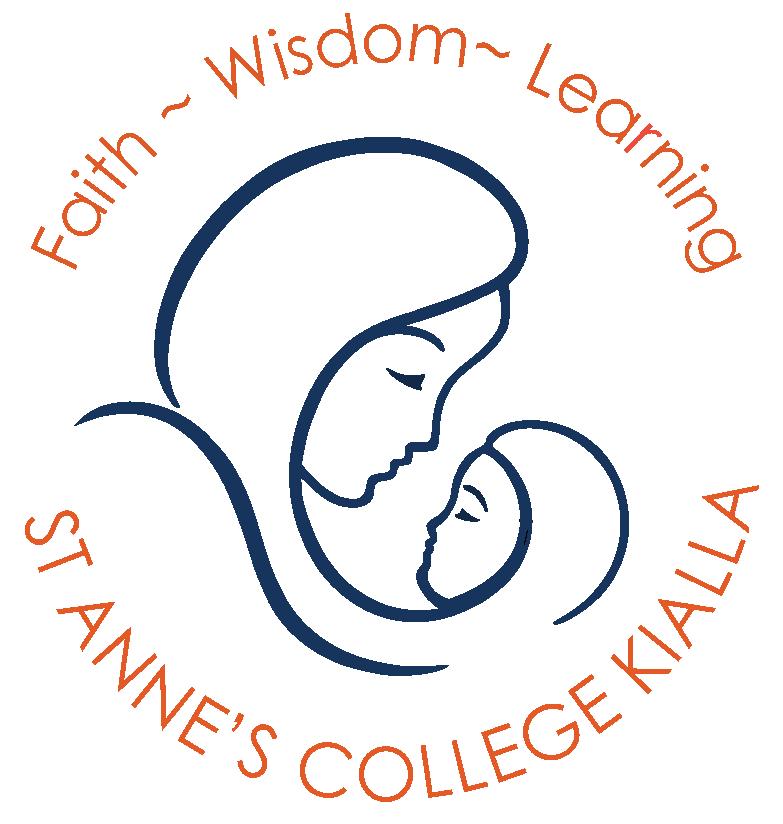
Advertisement
Dom Poppa (Principal)

On July 26, 2018, before the school was officially opened, Lorraine Walker, member of St Anne’s College Board shared her reflections of St Anne with community members, foundation students, parents and guests on the Feast Day of St Anne. The custom of choosing a patron saint is of very long standing, emanating from the simple idea that the saint is interested in our efforts and situation, always ready and willing to be helpful. Many would have a personal favourite among the saints to whom they might appeal in particular circumstances. It used to be customary, even mandatory, to choose at least one saint’s name for Baptism. Much of this is based on a comparison between the saint’s earthly experience and the current experience of the person praying, or the one for whom we are praying. Often we choose a saint who is some kind of hero … one who did something inspiring, out of the ordinary … maybe an example to motivate children to pursue the goal of being the best of which they are capable of. Very few biographical facts are available to us about St Anne. However, early Christian tradition, specifically in the apocryphal Gospel of James, held that Mary, the mother of Jesus had parents known as Joachim and Anne. This dates back to the 2nd century. A famous work of Leonardo da Vinci titled The Virgin Child and St Anne shows Mary seated on her mother’s knee with Jesus in the foreground. The details are different in the work of other artists, but the main theme is repeated, namely the grand, or great parent at the back, enfolding the domestic world of Mary and her child. This is more than a beautiful picture; it has deeper meanings and a long history. The image comes down to us from the Middle Eastern civilisation that preceded Abraham, and is believed to be an attempt to show wisdom as background, a presiding presence, pervading and enfolding ordinary life. We know that St Anne was definitely a grandparent, but was she still alive in the childhood of Jesus? This fact is unknown. We can imagine a lovely grandparent as we think of the woman who educated her daughter, Mary, chosen to be the Mother of Jesus. However, even if she was not a physical presence, we know from our own experiences and observations that a grandparent does not have to be alive to have become influential. Some of our memories turn into legends over the years but, in that way, preserve powerful ideas for the family. Certain attitudes and outlooks are emphasised and remembered about how to live a good life, even if we might not think of them as saints, exactly. We say things like “As Grandma always said …” Pope Francis has called the elderly “custodians of memory.” St Anne is a saint to whom children can warm - as to the grandma or grandpa in their own families ideally. However, we think of St Anne as a patron, not just for students in our College, but also for all those who live a large part of their lives in the place of parents, as we say “in loco parentis.” This would certainly include the staff of a school. Both teachers and grandparents are living out for children a version of that wisdom figure in Leonardo de Vinci’s picture; they are vitally engaged with children, but in a different way from parents. We observe how children can often accept from Nonna what is resisted from parents; grandparents can often be tolerant, patient, have time to listen appreciatively, be a less severe disciplinarian perhaps. We all have our stories of grandparents who, when we were young were strict with us, but who seem to have lowered the standard for their grandchildren! And children often, even mostly, tend to look up to grandparents and teachers and endow them with star quality [not always deserved]! To be admired by a child gives the in loco parentis person a special responsibility. In educating children in loco parentis, all are sharing and playing their part in the dream of parents who want their children to grow up with their potential fully developed and enjoy life to the full. St Luke’s gospel [Luke 3:52] tells of the time when Jesus, after being found in the temple by his frantic parents who had thought him lost, (that he) went back to Nazareth .. ”and was obedient to them, … and progressed steadily in wisdom and age and grace before God and men.” So we appeal to St Anne, as our patron, the mother of Mary, the grandmother of Jesus, to help us all travel this same path, bringing our children and young people to see Jesus, our Lord and saviour, and to grow like Him, in wisdom, and age and grace. L-R: Avaya, Amaya, Ella & Jemma
Safe on Social W: safeonsocial.com E: wecanhelp@safeonsocial.com

Social Media - Top Tips for Parents
• Talk to children about online privacy issues, making sure they know to never to identify personal information such as their full name, address, age, school and don't ever post photos in school uniform.
Teach your children to respect people’s privacy and don’t share anyone else’s personal information online without permission.
Don’t tag photos of your children at their school if your accounts are not set to completely private. This is a child safety issue as anyone driving past can search the school on Instagram and see all of the photos that have been tagged at the school, often by parents who have not set their account to private on Instagram. If your account is not completely private, anyone can see your photos of your child, their name, the name of the cat ,where you go on holiday, what your family does on weekends, when birthdays were and other information about your family and your life. Therefore a complete stranger could make up a story that could be very convincing to your child by using the information you have shared in a public forum of more than 500million users.
• If you are going to post anything with a significant fact, check it first.
• Teach your children to understand the importance of passwords, keeping them private and changing regularly.
• Make sure the apps you allow your children to use are age appropriate.
• Don’t be patronising or insulting to anyone. This kind of behaviour validates bad behaviour in children as they often see it if you are connected to young people on social media.
Ban devices from the bedroom from as young as possible. Set boundaries around use.
Stay positive. If you see something you disagree with – don’t engage.
